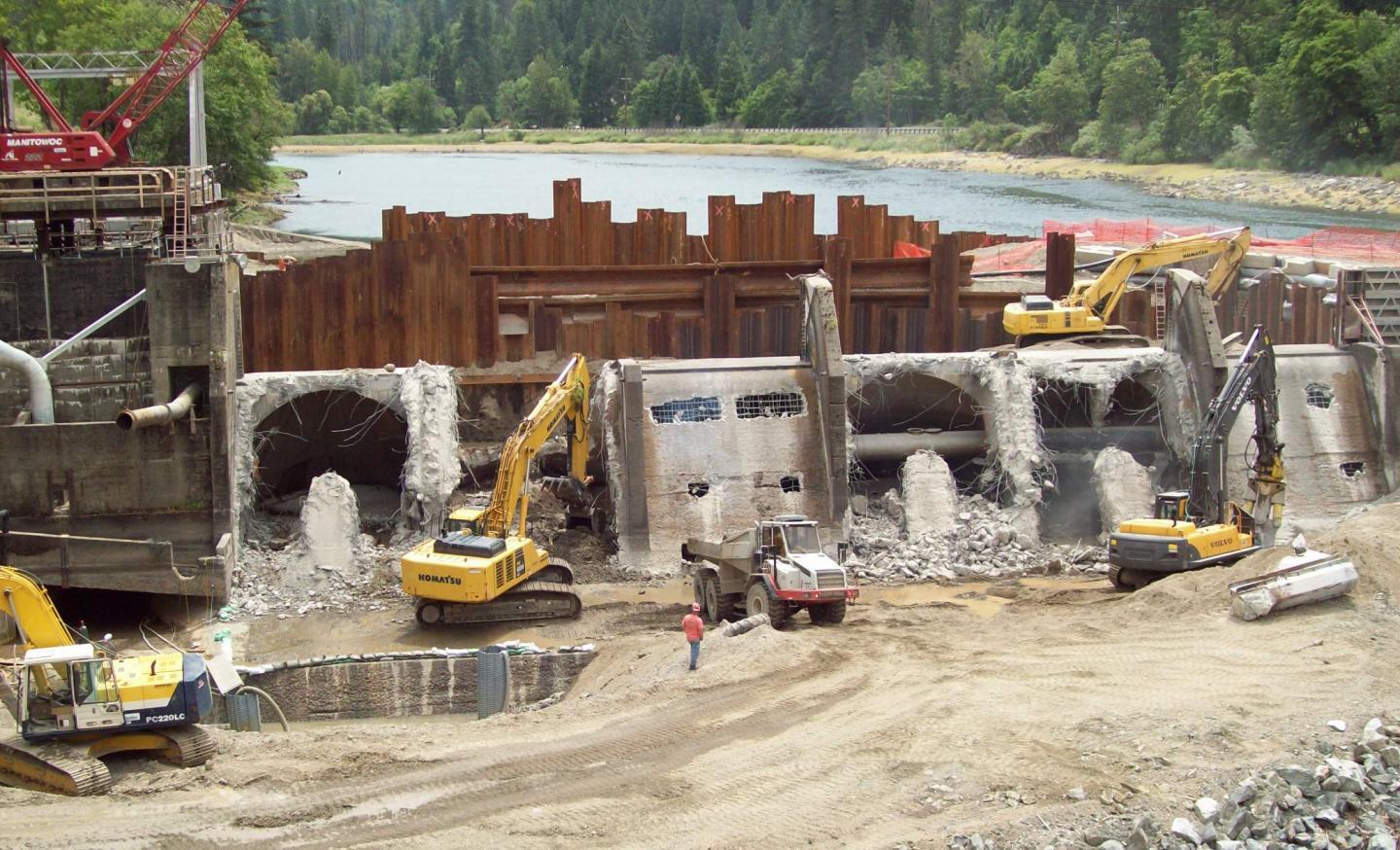CORVALLIS, Ore. – A study of the removal of two dams in Oregon suggests that rivers can return surprisingly fast to a condition close to their natural state, both physically and biologically, and that the biological recovery might outpace the physical recovery.
The analysis, published by researchers from Oregon State University in the journal PLOS One, examined portions of two rivers – the Calapooia River and Rogue River. It illustrated how rapidly rivers can recover, both from the long-term impact of the dam and from the short-term impact of releasing stored sediment when the dam is removed.
Most dams have decades of accumulated sediment behind them, and a primary concern has been whether the sudden release of all that sediment could cause significant damage to river ecology or infrastructure.
However, this study concluded that the continued presence of a dam on the river constituted more of a sustained and significant alteration of river status than did the sediment pulse caused by dam removal.
"The processes of ecological and physical recovery of river systems following dam removal are important, because thousands of dams are being removed all over the world," said Desirée Tullos, an associate professor in the OSU Department of Biological and Ecological Engineering.
"Dams are a significant element in our nation's aging infrastructure," she said. "In many cases, the dams haven't been adequately maintained and they are literally falling apart. Depending on the benefits provided by the dam, it's often cheaper to remove them than to repair them."
According to the American Society of Civil Engineers, the United States has 84,000 dams with an average age of 52 years. Almost 2,000 are now considered both deficient and "high hazard," and it would take $21 billion to repair them. Rehabilitating all dams would cost $57 billion. Thus, the removal of older dams that generate only modest benefits is happening at an increasing rate.

Workers dismantle the Savage Rapids Dam on the Rogue River in Oregon.
(Photo Credit: Oregon State University)
In this study, the scientists examined the two rivers both before and after removal of the Brownsville Dam on the Calapooia River and the Savage Rapids Dam on the Rogue River. Within about one year after dam removal, the river ecology at both sites, as assessed by aquatic insect populations, was similar to the conditions upstream where there had been no dam impact.
Recovery of the physical structure of the river took a little longer. Following dam removal, some river pools downstream weren't as deep as they used to be, some bars became thicker and larger, and the grain size of river beds changed. But those geomorphic changes diminished quickly as periodic floods flushed the river system, scientists said.
Within about two years, surveys indicated that the river was returning to the pre-removal structure, indicating that the impacts of the sediment released with dam removal were temporary and didn't appear to do any long-term damage.
Instead, it was the presence of the dam that appeared to have the most persistent impact on the river biology and structure – what scientists call a "press" disturbance that will remain in place so long as the dam is there.
This press disturbance of dams can increase water temperatures, change sediment flow, and alter the types of fish, plants and insects that live in portions of rivers. But the river also recovered rapidly from those impacts once the dam was gone.
It's likely, the researchers said, that the rapid recovery found at these sites will mirror recovery on rivers with much larger dams, but more studies are needed.
For example, large scale and rapid changes are now taking place on the Elwha River in Washington state, following the largest dam removal project in the world. The ecological recovery there appears to be occurring rapidly as well. In 2014, Chinook salmon were observed in the area formerly occupied by one of the reservoirs, the first salmon to see that spot in 102 years.
"Disturbance is a natural river process," Tullos said. "In the end, most of these large pulses of sediment aren't that big of a deal, and there's often no need to panic. The most surprising finding to us was that indicators of the biological recovery appeared to happen faster than our indicators of the physical recovery."
The rates of recovery will vary across sites, though. Rivers with steeper gradients, more energetic flow patterns, and non-cohesive sediments will recover more quickly than flatter rivers with cohesive sediments, researchers said.
Source: Oregon State University